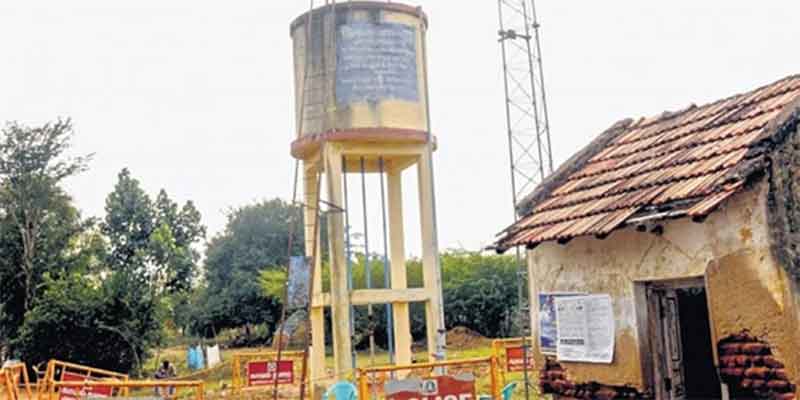
The recent Hathras incident of violence against a 19-year-old Dalit girl has boomeranged the relevance of caste question in academia and at least digital media. It has again illustrated the complex structure of violence against women, which places the Dalit woman at the absolute bottom. The unfolding of the debates, however, indicate an interesting trend of Savarna spokespersons from various fields hell-bent on looking at this as a “violence against women” issue. This is illustrative of not only a smokescreen towards the realities of everyday performances of caste, but also the spill overs of the casteist biases of the educators itself.
The school is where it formally starts. To the people who propose that only education can lead us to an eradication of caste per say, the answer is simple. The school does not exist in a vacuum. It is very much a part of the society and so is its composition. When a teacher says “yahi sab seekhte ho ghar mein” (this is what you learn at your house), there is an implicit indication towards the what “kind” of house he/she has in mind. Even normal conversations like “kya bhangi ki tarah dikh rahe ho/ kya chor-chamar ki tarah kar kar rahe ho” ( ‘bhangi’ and ‘chamar’ are Scheduled Caste groups in India), are part of the everyday vocabulary that I have all heard in school.
“Who all among all of you is a ‘Srivastava’?” asked a teacher of history at my senior secondary school. The school is still one of the leading institutions in Jharkhand, from where I belong. I still remember explicitly about that day. The purpose of asking this question was clear, he wanted to know “his” students. He also used to mark people accordingly. This teacher, himself a Srivastava (an upper caste), was not only a horrible teacher, but to ask this in a classroom left me aghast even then. I come from a Bahujan family, and my parents raised me in a very ‘caste-neutral-ecosystem’, which I strongly do not suggest. It just keeps you shunned in a veil of ignorance, and when you step out of your houses, the casteist throes of the world leaves you enthralled, trampled in multiple ways.
The school therefore not only maintains the casteist divisions, even in the “urban” lifeworld, but also perpetrate these divisions further. The casteist mind-frames of the educators negatively spill-overs and further entrenches these divisions in the newer generations. This is why perhaps Savarna narratives of the Hathras incident is also conveniently wanting us to look at it from a “violence against women” kind of lens.
The story obviously does not end at the school level. In higher institutions, the labyrinth of caste violence gets further complicated. I remember my father speaking about the caste-based segregated hostels in Bihar when he was studying in the 70s-80s. Often there used to be incidences of violence among various “men” from “different” hostels. These incidences obviously cannot be dismissed as hormonal ego clashes of teenage boys/men. When the hostels are segregated based on Caste (however informally), it is another example of Savarna convenience to look at these incidences as testosterone-y trounces.
On one hand the theoretical curriculum engages you with multiple debates on why ‘Caste Matters’, Egalitarian Justice etc., and on the other you also see the biases against Dalit-Bahujan students with respect to interviews and Viva-Voce marks. In Jawaharlal University these biases have been time and again raised by various student’s outfits. Apart from this, subtle forms of everyday casteism is indicated in some teachers saying things like ‘..but how can you teach in Hindi in a classroom…’/‘…When some students come for counselling, you know they will not cope in “this” college…’, etc. These are not figments of my imagination, but some excerpts of what I have heard over my long academic pursuit, first in some schools in Ranchi and then in various Universities in Delhi.
If these accounts sound ‘everyday’, ‘common’ and ‘banal’, it is because you have the privilege to see this as ‘everyday, common and banal”. For the ones who go through this, ‘listen’ and not ‘hear’ these, these accounts cut deep. It reminds you of your own social location and illustrates the oblivion in which the ‘privileged-social-location’ Savarna lives in. The dismal percentage of the educators from the Dalit-Bahujan community in higher educational institutions is also a major problem why education has not been the adequate answer to annihilating caste. According to the latest UGC data, till January 2020 only 2.8% of the posts sanctioned for OBC professors were filled in leading central Universities like JNU, DU, Allahabad University etc. among others. Most of the Dalit-Bahujan professors remain at the Assistant level (if appointed at all), despite the ordinance that was passed in 2019 called ‘Central Educational Institutions (Reservation in Teachers’ Cadre) Ordinance’. Things are not going to get better if we do not have more representation in the form of Dalit-Bahujan educators. Similar representation must be also introduced in primary schools, both public and private, according to me. It is similar to the demand that even each police station (in rural areas specifically) should appoint a Dalit-Bahujan Sub-Inspector so that cases of atrocities are at least filed.
The dream of annihilating caste keeps pushed farther and farther away by the present state of educational ecosystem. Until we rethink and reconstruct the present structures that define this very casteist educational ecosystem, it is impossible for that dream to actualize.
Nidhi Prabha is doctoral candidate at Centre for Political Studies, Jawaharlal Nehru University. Her research interests include Gender and Urban issues and the relationship between Class, Caste and Sexuality in the gender-urban matrix. She has worked on Gendering Mobility in Delhi Metros and public buses as a part of her MPhil research. Presently her PhD work is on looking at the questions of everyday mobility of women in Navi Mumbai through the local trains and public-bus systems.
SIGN UP FOR COUNTERCURRENTS DAILY NEWSLETTER
















































